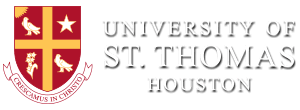Be Bold Blog
The University of St. Thomas (UST) is Houston’s Catholic University, committed to the Catholic intellectual tradition and the dialogue between faith and reason. Our blog is dedicated to helping you explore your future career possibilities and how to make the most of your college experience.
A Closer Look at the Texas Nursing Shortage

As the largest group in the healthcare workforce, and the primary providers of hospital patient care and long-term care, nurses are the backbone of the American medical model. Yet, even before the Coronavirus pandemic, hospitals across the nation were struggling to hire enough registered nurses (RNs). The COVID-19 public health emergency added incredible stress to an already burdened system, and many frontline healthcare workers reported high levels of burnout.
The pre-existing Texas nursing shortage was particularly exacerbated by the pandemic. By 2030, the state is projected to have the second-highest RN deficit in the country, only behind California. According to the Texas Center for Nursing Workforce Studies, in 2019 Texas was short 27,000 nurses. By 2032, the Center projects there will be a deficit of around 57,000 nurses.
To better understand this critical situation, keep reading for important context, challenges and potential solutions for building a robust pipeline of trained RNs in the Lone Star State.
Contributing factors to the nursing shortage in Texas
This critical nursing deficit has been around for decades. In fact, the Texas Legislature passed the Nursing Shortage Reduction Program, which is still ongoing, into law in 2001. The program makes it possible for the Texas Higher Education Coordinating Board to provide funds to nursing programs that increase their number of graduates.
As for what’s causing the Texas nursing shortage, there are several interconnected reasons. Let’s take a look at the most significant factors:
1. The U.S. population is rapidly aging
Fortunately, these days people are living longer, more active lives – but as they age, they require increasing levels of care. Right now, the U.S. has the highest population of citizens over the age of 65 than it has had at any other time in history. By 2030, the entirety of the baby boomer generation – around 73 million people – will have reached retirement age.
This enormous shift in American demographics is a principal driver of the increased need for trained healthcare professionals of all kinds, especially RNs. Elderly patients typically require more complex integrated care, as they are often dealing with several diagnoses and comorbidities at the same time.
2. Limited supply of educators to train new nurses
Interest in the nursing profession has been steadily on the rise for years – in fact, nursing schools across the state are receiving a record number of applications to nursing programs. However, the number of seats available are limited because there simply are not enough faculty to teach everyone who applies. In fact, The Texas Department of State Health Services (DSHS) reported that 54 percent of qualified applicants in 2019 were not granted admission to one of the region’s 27 prelicensure registered nurse education programs due to lack of space.
The nursing faculty shortage is in large part due to an aging workforce. The American Association of Colleges of Nursing (AACN) reports that the average age of nursing faculty with a doctoral degree in the role of professor, associate professor, and assistant professor was 62.4, 57.2 and 51.2 years, respectively. And according to the Texas DSHS, 38.8 percent of pre-licensure RN faculty in Texas in 2019 were currently eligible for retirement – or would be within 6 years.
3. Nursing burnout from the pandemic
Starting in March 2020 with the first large outbreak in New York City, many intensive care units have been periodically overwhelmed with COVID-19 patients. Even facilities that were previously well-staffed could not keep up with the surge of critically ill patients who required respiratory therapy and round-the-clock care.
Many of the frontline healthcare providers who bravely responded to the pandemic worked overtime out of a sense of compassion and duty to their patients and fellow caregivers. This, coupled with the emotional and mental toll of the job, has led to an increase in burnout and early retirement among nurses.
How the Texas nursing shortage affects patient care
Nursing is a demanding job, and it takes significant emotional, mental and physical strength to provide high-quality care. In the absence of sufficient staff, nurses have little other choice than to take on more patients. This puts additional strain on providers who are often already overworked – and can lead to low morale, nurse burnout and early retirement.
Having an unsustainably high patient-to-nurse ratio also can have a detrimental impact on patient care. It has been shown that nursing shortages can lead to more patient care errors, as well as higher morbidity and mortality rates. While some states have started to draft legislation that limits patient-to-nurse ratios, this does not reduce the number of patients who need care.
Increasing the number of trained RNs is critical not just for improving patient outcomes, but also for increasing nursing retention rates. When teams are adequately staffed, patients are happier, errors are less common and staff simply aren’t as likely to experience burnout.
Potential solutions for reversing the nursing shortage in Texas
Alleviating the Texas nursing shortage will require strategic short- and long-term initiatives, plus continued dedication on the part of lawmakers, educators and healthcare providers. Three short-term changes that could help include:
1. Recruit more qualified nursing faculty
The most important barrier to overcome is the lack of nurse educators. Without more instructors, we can’t begin to address the crisis. One way to get more nurses interested in becoming faculty members is to offer incentives like loan repayment programs for advanced nursing education, mentorship, teaching assistants and salaries that compete with clinical roles.
2. Offer additional financial support and resources to nursing students
Although there is currently an over-supply of qualified nursing school applicants in Texas, enrollment is only half the battle. There is ample opportunity to help students persist to graduation. Creating more loan forgiveness programs and fellowships along with other favorable financing options for BSN degrees would go a long way to making nursing school more accessible.
3. Admit more students to BSN programs
Employers overwhelmingly prefer new hires to have a Bachelor of Science in Nursing degree. The latest survey from the AACN shows that 46 percent of employers require new hires to have a bachelor’s degree, while 88 percent “strongly prefer” baccalaureate-prepared nurses. Hospitals have good reason for seeking out nurses with a BSN – a 2014 Lancet study found that every 10 percent increase in bachelor’s degree nurses on staff was associated with a decrease in patient mortality by seven percent.
Universities can also do their part to help grow the RN pipeline, according to Dr. Lucindra Campbell-Law, professor at the Peavy School of Nursing (PSN) at the University of St. Thomas (UST). “The UST nursing program is well positioned to help meet the nursing demand,” Dr. Campbell-Law explains. “We have responded to the shortage by increasing the number of nursing students enrolled in the traditional BSN program.”
She goes on to say that UST also implemented an accelerated BSN program (ABSN) for prospective nurses who already have a BA or BS in a non-nursing field. ABSN students can earn a nursing degree in as few as 12 months with a combination of online coursework plus onsite skills labs and clinical rotations in Houston.
Step up to help ease the Texas nursing shortage
Now that you’re informed about the Texas nursing shortage and the critical need for across the United States, you might feel called to step up and help fill the gap in your community. If you’re considering joining the ranks of this rewarding profession, start researching your next steps in our article, “How to Become an RN in Texas.”
Ready to take the next step?
Related articles
About UST
The University of St. Thomas (UST) is Houston’s Catholic University, committed to the religious, ethical and intellectual traditions of Catholic higher education. For more than 70 years, we’ve been graduating students like you into successful careers in medicine, education, business, public administration and more – throughout Houston and across the globe.

